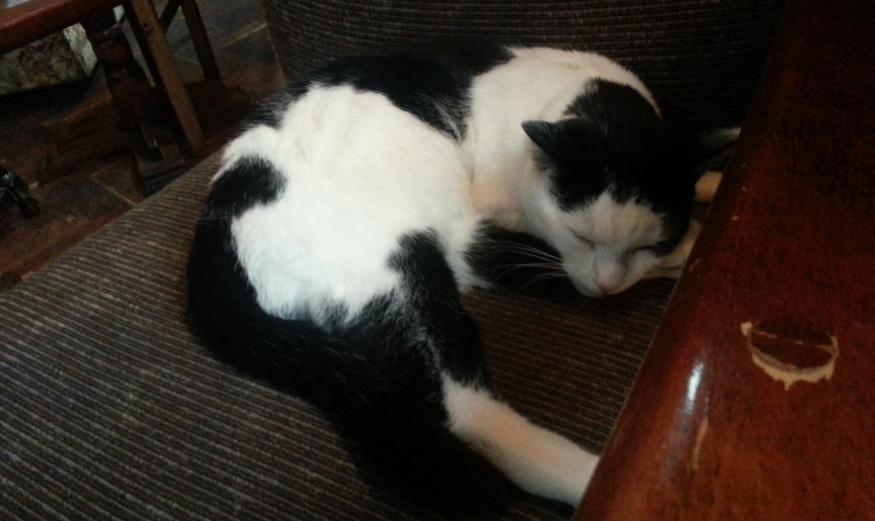
Londonist would like now to offer some tools to the public in their dealings with pub cats. When we were carousing at the Hoop and Grapes in Farringdon Road, the pub cat showed up to patrol around closing time. We were a bit taken aback when proffering a hand to have it met with a growl and a flick of the tail fit to raise welts. Such moods seem out of character in a pub cat and our first reaction was to wonder how it passed the job interview.
However, we later reflected on the experience and now reproduce an analogue of the Beaufort Scale — a non-scientific way of measuring the strength of wind — to remark on the tempestuous mood swings of pub cats.
This invention arises from the benign conflation of two ideas which sometimes arises under the influence of alcohol. Robinson Crusoe author Daniel Defoe and hydrographer Francis Beaufort (plaques in Stoke Newington and Manchester Street respectively) each came up with a scale of wind strength of use to shipping. We also recently ran across a detailed biography of a Georgian ship’s cat, Trim, by captain Matthew Flinders (his blue plaque is off Fitzroy Square).
Beaufort’s original scale was based on observation of the rigging of a small frigate. It was later adapted for land use. It is now time to extend its application indoors, and to a small furry animal.
A ‘smart’ collar is in preparation in our underground labs, a necessary step in the creation of an internet of pets. But meanwhile, whether you are in Catford or Mog-adore, Purfleet or Petts Wood, it may be useful for landlords recruiting mousers, or to chalk up status hourly, and for pub goers to have handy when texting, a readily understood score for feline moods based on our new chart below.

Trim: a case study
A brief resumé. Although born at sea we know that Trim (1799-1804) was quartered briefly in Deptford near the naval dockyard and taken to London by stage coach in which he occupied a seat ‘at full liberty’. He subsequently accepted another posting and his naval service continued in the South Seas where, eventually, he was eaten. Now for the case study.
When Captain Flinders (1774-1814) observed of Trim: ‘he had no fear of evil spirits’, we may confidently assign the cat a minimum mood of 2.
‘A musket ball slung with a piece of twine, and made to whirl round upon the deck by a slight motion of the finger, never failed to attract his notice.’ This is consistent with a mood of 5.
‘A slight motion of the end of his tail denoted the commencement of impatience.’ We now recognise this mood as being number 8 on our scale — a point at which we would need to approach a cat with caution.
We think we have the makings of a psychometric test to offer pub landlords recruiting cats, and an app is in development.



